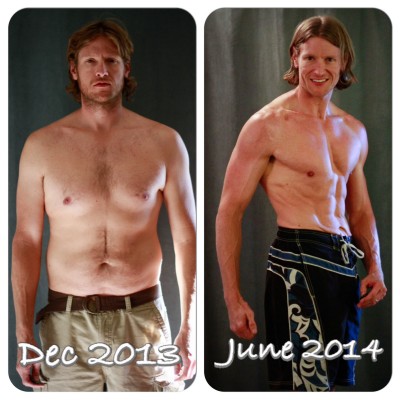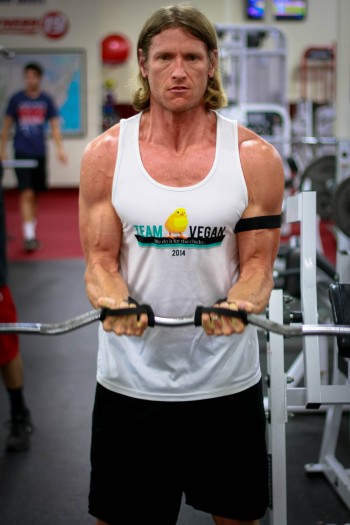Dietitian Perspectives on Protein, Calcium and Vegan Bone Health
November 6th, 2014 by Jack Norris RDNote: this article is co-authored by Jack Norris, RD and Ginny Messina, MPH, RD and appears on Ginny’s blog as well as this one.
Vegans typically have lower calcium intakes than other vegetarians and meat-eaters. But just how much does this matter?
The popular thinking has long been that it doesn’t matter much at all. According to the acid-ash hypothesis of osteoporosis, vegans experience smaller calcium losses since we don’t eat animal protein. The theory is that calcium is “leached” from bones to counter acidic conditions caused by animal protein.
It’s supported by studies that find higher levels of both calcium and acidic compounds in the urine when people are fed big doses of animal protein (1). This is also supposedly why hip fracture rates are higher in countries with high animal protein intakes (2).
But while the theory had great support several decades ago, it hasn’t held up to the scientific evidence. An article by vegan dietitian Dr. Reed Mangels, based on a presentation she gave at the Sixth International Congress on Vegetarian Nutrition sums up the more recent research very well (3). It should be required reading for all vegan and vegetarian nutrition professionals.
Unfortunately, a quick Google search of “vegan-calcium-bone-health” shows that many vegan educators, including some who are health professionals, are still promoting the idea that protein causes calcium loss from bones.
We thought it would be interesting to see where vegetarian dietitians fit into all of this. So, we created a true/false questionnaire about bone health, protein and vegan diets. We asked dietitians who subscribe to the email list for the Vegetarian Nutrition Dietetic Practice Group (VNDPG) to answer the questions.
Although this was a small, unscientific survey, the results were interesting. They showed that VNDPG members were more aware of the issues than the general vegan community and are sharing better information than what is often available on the internet and elsewhere. But in some cases, even RDs weren’t aware of the newer research on protein and bone health.
Here is the survey with our answers.
1. Protein contributes to bone structure. TRUE
Most RDs got this one right. Bone contains collagen and other proteins and you can’t build and maintain bones without protein (4).
2. Protein from animal foods causes calcium loss from bones. Probably FALSE
According to a 2009 meta-analysis of epidemiological studies, protein is not harmful to bone health and may be beneficial (5). Particularly relevant to vegetarians, in the Adventist Health Study-2, vegetarians who ate the most protein-rich foods like legumes and veggie meats, had the fewest fractures (6). It’s true that studies link higher protein intake with higher urinary calcium losses. But this is in response to eating isolated proteins, not protein-rich foods (7). The phosphorus in those higher-protein foods seems to cancel out the effect on bone loss. Protein also improves calcium absorption when calcium intakes are low (8), so it’s possible that the higher amounts of calcium in the urine simply reflect that greater amounts being absorbed from the diet.
In fact, another 2009 meta-analysis—this one looked at clinical studies—found that the amount of calcium lost in the urine didn’t correlate with calcium balance in the body or with markers of bone health (9). That is, acidic conditions didn’t produce a net loss of calcium from the bones.
The studies comparing hip fracture rates among countries have also been called into question. Since they’re ecological studies, they don’t control for anything and are only marginally useful.
Better information comes from The Hong Kong Osteoporosis Study. This research found that hip fracture rates were lower in Hong Kong than Sweden but that spinal fracture rates were higher (10). And while that seems conflicting, it’s really not. Hip fracture rates are affected less by bone health and more by the likelihood of falling. Spinal fractures, on the other hand, actually reflect bone health. In fact, the researchers said that despite lower hip fracture rates, the Hong Kong women had more osteoporosis.
3. Drinking cow’s milk promotes osteoporosis. Probably FALSE but maybe TRUE
Given the discussion above, it doesn’t seem that the protein in milk would raise risk for osteoporosis. But, research published just last week did raise questions about the effects of milk-drinking on bone health.
The Swedish researchers found that women who drank more than 3 glasses of milk per day had a much higher rate of fracture than those who drank less than a serving (11). In contrast, though, they found that cheese and yogurt were associated with lower rates of fracture. Earlier research in Adventists also found a protective effect of cheese on bone health (12).
One possible explanation, according to the Swedish researchers, is that the sugar galactose—high in milk, but low in cheese and yogurt—is the factor affecting fractures. The research supporting this is in animals, though.
Although it would be premature to say that milk raises fracture risk, there isn’t much evidence that milk-drinkers have any particular health advantage, either. Since we oppose dairy consumption on ethical grounds, it seems like it’s enough to know that nobody actually needs dairy foods in their diet.
4. Research shows that vegans have fewer bone fractures than meat-eaters. FALSE
What evidence we have for this — and admittedly, it’s very little — isn’t especially favorable for vegans. In the EPIC-Oxford study, vegans had a 30% higher risk for fracture after adjusting for numerous variables like age, smoking, alcohol consumption, and physical activity. After adjusting for calcium intake, however, there was no difference in fracture rates. Vegans who got enough calcium were no more likely to break a bone than milk-drinkers (13).
Likewise, in the Adventist Health Study-2, there was a trend toward higher fracture rates among the vegans compared to other vegetarians as well as non-vegetarians (6). (This study didn’t test for statistical significance.)
5. People eating plant-based diets have lower calcium needs than meat-eaters. Probably FALSE
If protein doesn’t have a negative effect on bone health, then there is no reason to think that vegans have lower calcium needs. The EPIC-Oxford study mentioned above suggests that the lower calcium intakes that are typical of vegans may be harmful.
6. The US RDAs for calcium are similar to the World Health Recommendations. TRUE
A common belief is that the WHO recommends just 400 to 500 milligrams of calcium per day. But, the WHO recommends 1000 mg of calcium for adults which is the same as the US RDAs.
Two last questions on our survey looked at the more holistic story of diet and bone health.
7. Weight-bearing exercise is important for bone health TRUE
8. A variety of nutrients including vitamin D, potassium, magnesium, and calcium is needed for healthy bones. TRUE
No surprise that 100% of our respondents knew that bone health is about much more than calcium. No single nutrient or food can make or break the strength of your bones. Keeping bones strong takes a whole diet and lifestyle approach. Getting enough calcium is just one part of that, but it is still an important part. Right now, there is no reason to think that vegans have any particular advantage where this is concerned.
Support JackNorrisRd.com
If you like my posts, please like my posts! Or share them. Thank you!
Purchase anything through these links and JackNorrisRD gets a percentage:
References
1. Schuette SA, Linkswiler HM. Effects on Ca and P metabolism in humans by adding meat, meat plus milk, or purified proteins plus Ca and P to a low protein diet. J Nutr 1982;112:338-49.
2. Frassetto LA, Todd KM, Morris RC, Jr., Sebastian A. Worldwide incidence of hip fracture in elderly women: relation to consumption of animal and vegetable foods. J Gerontol A Biol Sci Med Sci 2000;55:M585-92.
3. Mangels AR. Bone nutrients for vegetarians. Am J Clin Nutr 2014;100:469S-475S.
4. Boskey AL, Coleman R. Aging and bone. J Dent Res 2010;89:1333-48.
5. Darling AL, Millward DJ, Torgerson DJ, Hewitt CE, Lanham-New SA. Dietary protein and bone health: a systematic review and meta-analysis. Am J Clin Nutr 2009.
6. Lousuebsakul-Matthews V, Thorpe DL, Knutsen R, Beeson WL, Fraser GE, Knutsen SF. Legumes and meat analogues consumption are associated with hip fracture risk independently of meat intake among Caucasian men and women: the Adventist Health Study-2. Public Health Nutr 2013:1-11.
7. Spencer H, Kramer L, DeBartolo M, Norris C, Osis D. Further studies of the effect of a high protein diet as meat on calcium metabolism. Am J Clin Nutr 1983;37:924-9.
8. Kerstetter JE, O’Brien KO, Insogna KL. Dietary protein affects intestinal calcium absorption. Am J Clin Nutr 1998;68:859-65.
9. Fenton TR, Lyon AW, Eliasziw M, Tough SC, Hanley DA. Meta-analysis of the effect of the acid-ash hypothesis of osteoporosis on calcium balance. J Bone Miner Res 2009;24:1835-40.
10. Bow CH, Cheung E, Cheung CL, Xiao SM, Loong C, Soong C, Tan KC, Luckey MM, Cauley JA, Fujiwara S, et al. Ethnic difference of clinical vertebral fracture risk. Osteoporos Int 2012;23:879-85.
11. Michaelsson K, Wolk A, Langenskiold S, Basu S, Warensjo Lemming E, Melhus H, Byberg L. Milk intake and risk of mortality and fractures in women and men: cohort studies. Bmj 2014;349:g6015.
12. Matthews VL, Knutsen SF, Beeson WL, Fraser GE. Soy milk and dairy consumption is independently associated with ultrasound attenuation of the heel bone among postmenopausal women: the Adventist Health Study-2. Nutr Res 2011;31:766-75.
13. Appleby P, Roddam A, Allen N, Key T. Comparative fracture risk in vegetarians and nonvegetarians in EPIC-Oxford. Eur J Clin Nutr 2007;61:1400-6.


